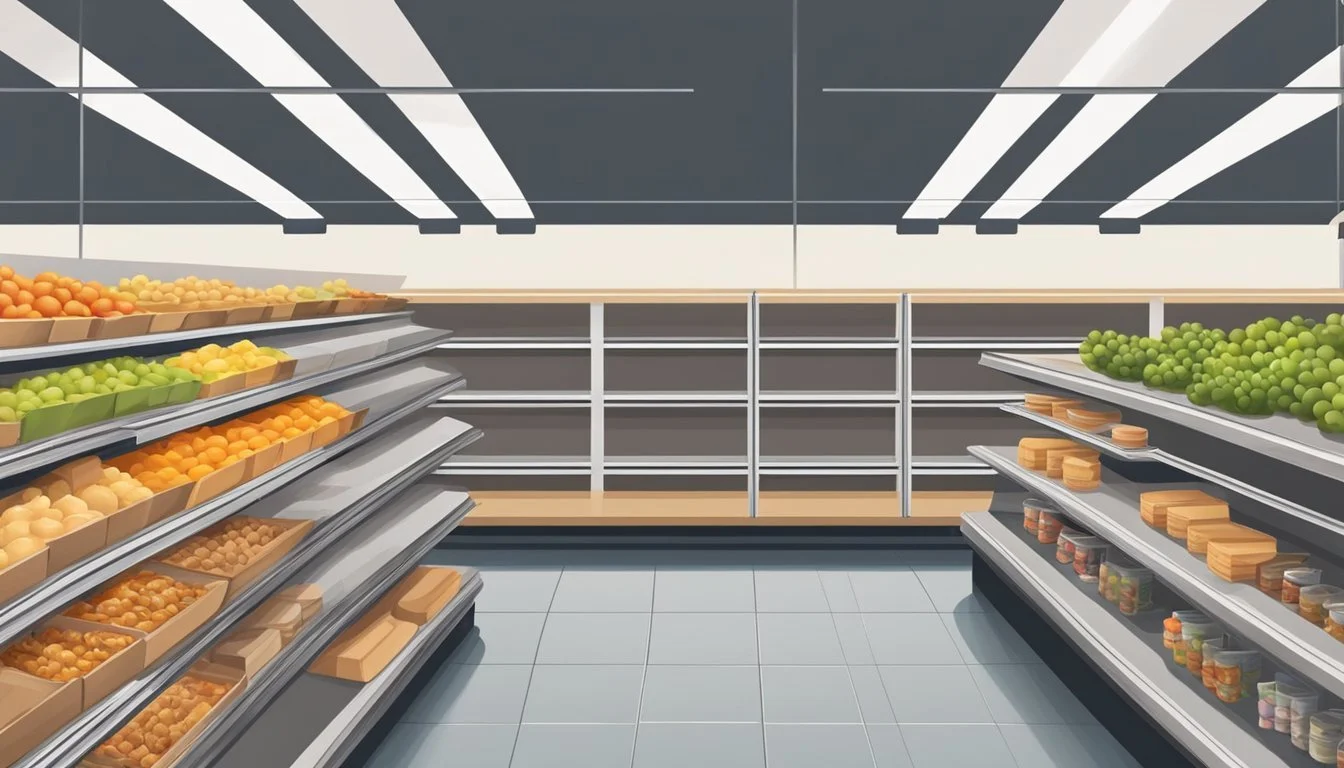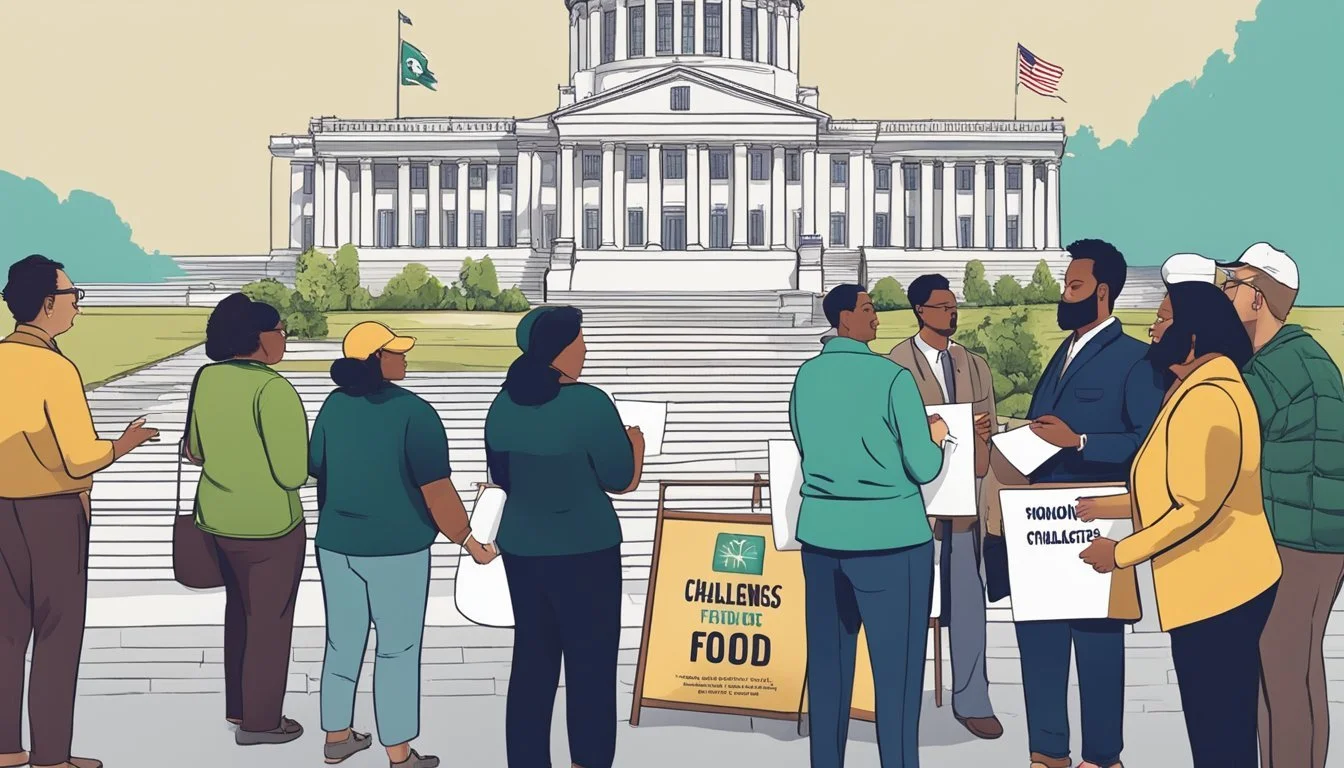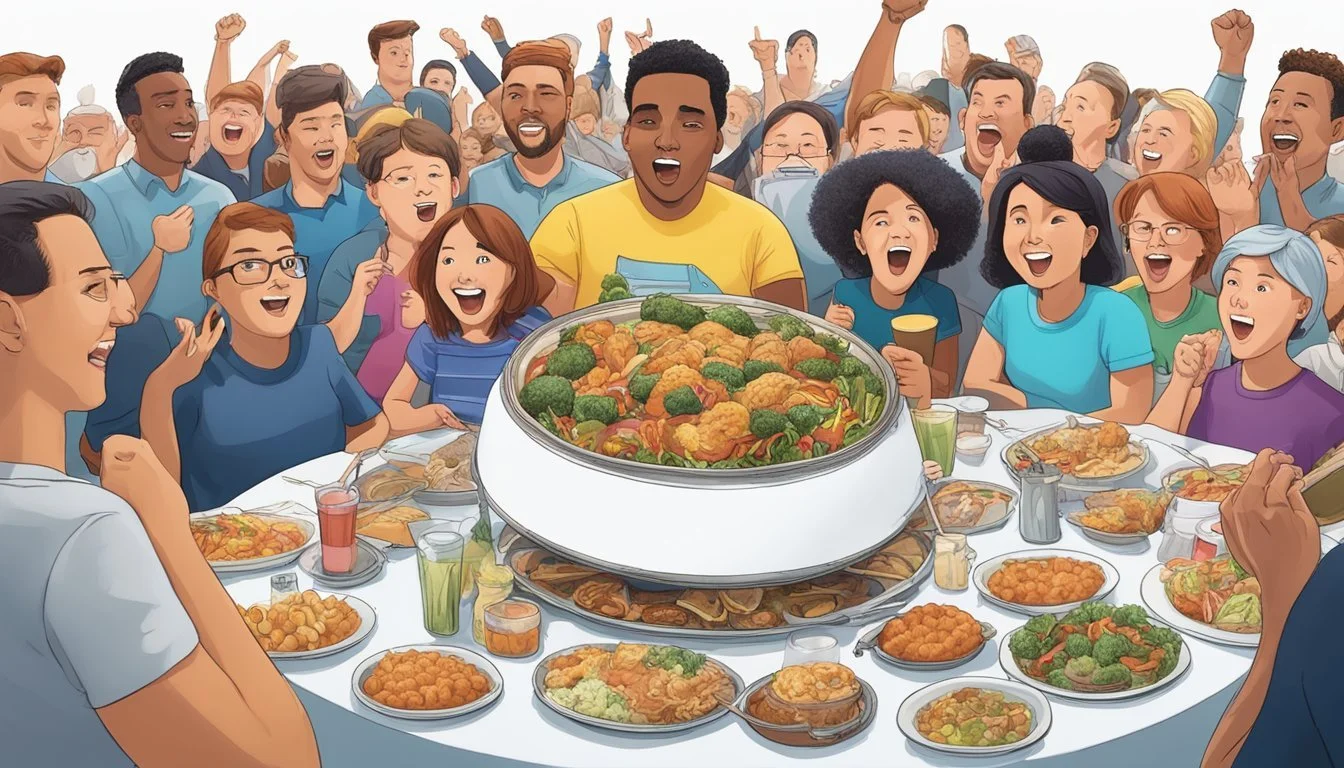Washington Food Challenges
A Guide to the State's Biggest Eats
Washington State offers a treasure trove of food challenges that cater to the adventurous eater seeking to test their limits. From the heftiest burritos to towering stacks of pancakes, these culinary trials provide both entertainment and a serious test of one’s capacity. They appeal to food enthusiasts and competitive eaters who aim to conquer massive portions and earn their spot in the local gastronomic lore.
Such challenges are scattered throughout the state, offering a diverse range of experiences. In Seattle, you might encounter the Great Wheel Eating Competition, where contestants tackle a smorgasbord of dishes against the backdrop of the city's iconic Ferris wheel. Elsewhere, Seattle's Wedgwood Broiler entices diners with a 72-ounce steak challenge, a nod to the classic American steakhouse experience with a competitive twist.
These gastronomic feats are not only about testing one's eating prowess but also about experiencing the food culture in Washington State. Each challenge uniquely reflects the local flavors and culinary history, making them a must-try for residents and visitors alike. Whether it’s for the thrill of competition or to simply savor the diverse flavors of Washington, these food challenges are adding an extra layer of excitement to the state's dining scene.
The Landscape of Food Challenges in Washington State
Washington State has developed a unique culture around food challenges, from local eating contests to statewide initiatives addressing food security. Both the fun and serious sides of Washington's food challenges highlight the state's diverse culinary landscape and the community's commitment to tackling issues of food insecurity.
Statewide Food Challenge Overview
Food challenges in Washington involve both competitive eating and addressing the broader challenge of food security. The University of Washington School of Public Health has reported on the state's food insecurity, highlighting the economic impacts of COVID-19 on Washington residents, including indigenous populations and people of color. Initiatives like the Washington State University's cooperation in food security surveys show a commitment to a robust food system.
Iconic Washington Food Challenges
The state's competitive spirit is showcased in venues like Kobe Sushi Bar in Bellevue, where a pho challenge invites diners to tackle a Big Bowl of broth, sprouts, and corned beef. Similarly, the Wing Dome in Greenwood tests spice tolerance with a hot wing challenge featuring fiery jalapeños and rich American cheese.
Food Challenge Events and Festivals
Festivals such as the Bite of Seattle celebrate Washington's food scene, hosting events like the ramen eating contest. These festivals unite communities and offer not just a competition but also an experience, where overcoming a food challenge may reward the winner with a free meal or a plaque to commemorate their victory.
Washington's Competitive Eating Records
Records set by local residents at establishments, like the big daddy of burger challenges at Acme Bowl or a tater tot and chili feast at Big Daddy's, are instances of Washington's engagement in sportive eating events. These challenges often involve finishing outrageously-sized portions within a time limit, acting as a testament to Washington's vibrant food challenge scene.
Health and Safety in Food Challenges
The state's health experts, including those at the Washington State's Environmental & Occupational Health Sciences and Nutritional Sciences Program, emphasize the importance of health and safety in these contests. Competitors are advised to understand their limits and the potential risks associated with competitive eating, as safety is paramount in such thrilling gastronomic feats.
Impact of the COVID-19 Pandemic on Food Challenges
The advent of the COVID-19 pandemic led to significant disruptions in Washington State's food systems, affecting both food availability and food security initiatives.
Adjustments and Adaptations
In response to the pandemic, numerous organizations were forced to implement crucial adjustments and adaptations to maintain operations. The food system's infrastructure had to pivot quickly to stabilize supply chains destabilized by COVID-19. Food producers and food banks, including pantries, experienced an increased demand for food assistance, as detailed in a study on how the pandemic has affected food access. They adapted by altering distribution methods and incorporating safety protocols to continue serving communities in need. Moreover, these entities faced changes in volunteer availability and had to innovate to meet the evolving challenges.
Food Challenges as Fundraisers
Food challenges took on a heightened significance as fundraisers during the pandemic. As traditional fundraising events were suspended due to social distancing mandates, organizations leveraged food challenges to raise funds and awareness. The disruption of the food supply caused by COVID-19 highlighted the importance of strong local food systems, leading to fundraising drives aimed at bolstering food security. Events such as the impact of COVID-19 on Washington's food systems provided critical support to those impacted, ensuring continued operation of essential services such as food banks and pantries amidst the pandemic.
Food Insecurity and Food Assistance Programs
In Washington state, the ongoing struggle with food insecurity highlights the crucial role of food assistance programs and the need for research-driven initiatives to improve food access for all communities, particularly BIPOC groups.
Understanding Food Insecurity in Washington
Food insecurity remains a significant challenge in Washington, impacting a diverse array of communities. Recent data from the Washington State Food Security Survey indicates that food insecurity has touched nearly half of the survey respondents. An alarming number of households struggle to afford adequate nutrition, a situation exacerbated by the economic effects of the COVID-19 pandemic.
Food Assistance Program Overview
Washington's response to food insecurity includes a variety of food assistance programs. Foremost among these are the Supplemental Nutrition Assistance Program (SNAP), commonly known as food stamps, and the Women, Infants, and Children (WIC) program. Both aim to provide eligible participants with access to healthy food. Additionally, food banks and pantries across the state offer immediate aid to those in need, serving as a critical support system.
University-Led Initiatives and Research
The University of Washington has been at the forefront of addressing food challenges. Researchers like Jennifer Otten, a faculty member at the University of Washington School of Public Health, have been actively involved in analyzing data from the WAFOOD survey to inform policy decisions and help design better food assistance strategies.
Barriers to Food Assistance Among BIPOC Communities
BIPOC communities in Washington face disproportionate barriers to accessing food assistance, including racial disparities in food insecurity and challenges related to language, transportation, and cultural relevance of available foods. This highlights an urgent need for tailored programs that are sensitive to the unique needs of these communities.
Efforts Toward an Economically Viable Food System
The Washington State Department of Agriculture has been working on creating an economically viable food system that is accessible to all residents. Initiatives have included Resiliency Grants focusing on strengthening the role of food banks as well as supporting local agriculture to ensure sustainable and equitable food access. Collaboration between government entities, nonprofits, and educational institutions is central to these efforts.
Washington's Food Scene and Resources
Washington State presents a rich tapestry for food enthusiasts, offering a variety of regional delicacies, local agricultural products, supportive food-assistance networks, and engaging food challenges. Visitors and residents alike have ample opportunities to explore and enjoy.
Regional Food Specialties
Washington is noted for its diverse regional food specialties. The coastal areas are famous for their seafood, particularly the succulent Dungeness crab (What wine goes well with crab?) and fresh oysters. Eastern Washington, on the other hand, is well-known for its apple orchards and sweet cherries. Such produce reflects the state's unique microclimates and rich soil, promising exceptional taste and quality.
Local Farmers and Food Producers
From the rolling fields of the Palouse to the fertile valleys of the Yakima region, local farmers and food producers are the backbone of Washington's food scene. They provide a wide array of produce, including onions, lettuce, and potatoes. Farmers markets across the state are a testament to the quality of meat, cheese, and other artisanal products created with a commitment to sustainability and community.
Washington Food Banks and Pantries
Washington's food banks and pantries play a critical role in ensuring food security for all residents. Organizations like Northwest Harvest and Second Harvest orchestrate the collection and distribution of food, including fresh produce and meat, to families in need throughout the region. These pantries help bridge the gap, making nutritious food accessible to everyone.
Restaurants Offering Food Challenges
Foodies seeking adventure often engage in food challenges across Washington. From the Tater Tot Challenge at Seattle's Acme Bowl to the Pho and Ramen Eating Contests held annually, these events draw crowds looking for entertainment and gastronomical thrills. Notable challenges include Kobe Sushi Bar's giant roll contest and the fiery hot wing challenges hosted by various pubs and eateries. Participants often face towering burgers, hefty slices of pepperoni pizza, and slow-cooked brisket worthy of any food warrior's ambition.
Economic and Environmental Considerations
In addressing food challenges, Washington State grapples with a complex interplay of economic and environmental factors. These considerations influence food production costs, the impact of climate change on agriculture, and the role of living expenses in accessible nutrition.
Operational Costs for Food Challenges
Operational costs for Washington's food production are influenced by a variety of factors, including labor, energy, and transportation expenses. Food waste represents a significant issue within these operational parameters. For example, the state generates approximately 1.2 million tons of food waste annually, placing a strain on economic and environmental resources. Initiatives like the Use Food Well Washington Plan highlight the potential for reducing these operational costs through better food waste management.
Climate Change and Agricultural Impacts
Washington's agricultural sector is increasingly impacted by climate change. As temperature fluctuations and extreme weather events become more common, they disrupt traditional farming cycles. These disruptions contribute to erratic food production output and may, in turn, drive up the operational costs.
Rent and Cost of Living Influence on Food Access
The state's rent and overall cost of living directly affect community food access. A high cost of living diminishes disposable income available for food, potentially forcing residents to compromise on the quality or quantity of their nutrition. Surveys like the WAFOOD Spotlight have been conducted to gauge the depth of food insecurity influenced by these economic pressures.
Legislation and Advocacy
Washington State has been proactive in tackling food challenges through legislative efforts and robust advocacy. This has involved the introduction of measures to reduce food waste and expand access to nutritious food, with various groups actively supporting and influencing policy change.
Food Legislation in Washington
Recent Legislative Actions:
The Washington State Legislature has endorsed measures aimed at reducing food waste, such as the establishment of the Washington Center for Sustainable Food Management. The primary objective of this center is to work towards a 50 percent reduction in wasted food.
Efforts have also been made to broaden food access. For example, over 90,000 students benefitted from the expansion of free school meal programs endorsed by the legislature. This was complemented by investments in nutrition programs managed by the Washington State Department of Agriculture.
Advocacy Groups and Movements
Key Players and Actions:
Organizations like Food Lifeline use their resources and influence to actively support legislation and measures to combat hunger. They drive initiatives by testifying at hearings and collaborating with other organizations to pass bills.
Entities such as Northwest Harvest advocate for the right to food, supporting a network of food justice organizations to ensure equitable access to nutritious foods. They work towards driving opportunity in Washington through public policy and legislative priorities.
These legislative initiatives and advocacy groups are critical in addressing the ongoing food challenges in Washington State, contributing to a more sustainable and equitable food system.
Conclusion
In summary, Washington State grapples with significant food-related issues. Food waste is a substantial challenge, leading to both environmental and socio-economic consequences. Each year, the state generates in excess of one million tons of food waste, an issue that spans the entire food supply chain. Effective interventions and best practices are imperative to mitigate this waste.
Food insecurity remains another pressing concern in the region, exacerbated by the COVID-19 pandemic. Surveys depict a stark scenario where households are forced to prioritize grocery expenses over other financial obligations like rent and utilities. Economic and food security impacts from the pandemic have been notable, and ongoing research aims to monitor these effects.
The Washington State Food Security Survey (WAFOOD) offers insights into residents' struggles. It highlights the disproportional impact on low-income households, and underscores the importance of accessible food assistance programs.
Agencies and local entities have been adapting to these challenges. For instance, food pantries have reconfigured their models to provide fresh food and maintain shopper-driven selections despite a decrease in donations.
Efforts to address these issues are in progress, with a focus on sustainable practices and equitable food distribution. One cannot overstate the importance of continued research and community engagement in the pursuit of solutions that will ensure food sustainability and security in Washington State.
Food Waste: A systemic issue needing targeted strategies.
Food Insecurity: Heightened by the pandemic; a priority for statewide response.
Community Response: Adaptable approaches in food assistance programs.
Research Importance: Ongoing WAFOOD studies to inform policy and aid programs.







